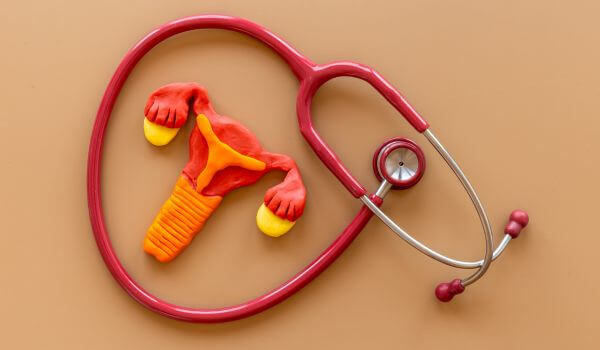 The winter months can present extra problems for people who suffer from chronic migraine attacks. Although the link between the frequency and severity of winter migraines to weather conditions can vary significantly among individuals, there are some general patterns.
The winter months can present extra problems for people who suffer from chronic migraine attacks. Although the link between the frequency and severity of winter migraines to weather conditions can vary significantly among individuals, there are some general patterns.
While some people may find that their migraines are triggered by hot weather, possibly due to dehydration or overexposure to bright sunlight, others might experience winter migraines in colder weather. This could be related to changes in barometric pressure, cold winds, or temperature variations as they move around between warmer indoors and the bitter cold outside.
How is chronic migraine diagnosed?
Telling the difference between an ordinary headache and a winter migraine can be highly subjective because no single feature can differentiate between them. In both a headache and a migraine attack, there is a feeling of pain inside the head. The word “migraine” comes from the Greek word hemicrania, which means “half of the head.” In most cases, migraines are distinguished from ordinary headaches because the pain is restricted to one side of the head. Headaches usually produce a throbbing ache spread throughout the head without a particular focus.
Migraines generally can go through four specific phases from the beginning of the onset until the attack has completely cleared. These are experienced as:
- Prodrome – experienced 24-48 hours before the start of a headache. It may include yawning, mood changes, food cravings, gastro-intestinal symptoms, increased sensitivities or neck stiffness
- Aura – can start about 15 minutes before the migraine itself, lasting for about 20 minutes. Auras are usually experienced as sight and sound changes, like brightly flashing colored and moving lights or blurred vision, blind spots, and hearing. Other sensations can include changes in speaking, smell, taste, movement, or touch. Often, an aura is a distinguishing feature that differentiates between a standard headache and a migraine attack.
- Headache – which should differ from ordinary headaches in at least two out of these features:
- Felt only on one side (unilateral location)
- Throbbing or pulsating or quality
- Moderate to severe intensity
- Aggravated by movement, exertion, or external stimulus (lights, sounds, smells)
- Postdrome – after the pain subsides, the person feels exhausted or euphoric.
Introducing POUND
Doctors have developed an acronym (POUND) for the five main features that can be experienced by someone undergoing a migraine attack that is not related directly to the feeling of pain:
- Photophobia & Phonophobia with sensitivity to light and loud noise that may produce sharp spikes in the pain.
- Ongoing duration of a severe attack. Unlike headaches, which can clear up in a few hours, migraines, especially in people who experience aura and suffer chronic migraine, may last from 12 up to 72 hours without remission and are not relieved in the same way as tension headaches
- Unilateral focus of the pain, which is usually felt more intensely on one side of the head
- Nausea and vomiting.
- Disabling regular activity due to the intensity of the pain and discomfort.
When will the diagnosis become chronic migraine?
A person is diagnosed as suffering from chronic migraine when they have some form of headaches for at least 15 days in each of the past three months. Also, at least five of those headaches must match the symptoms of migraine with aura rather than simply be headaches.
In the United States, it is estimated that approximately 2-3% of the adult population suffers from chronic migraine at any one time. It will have been experienced by over 10% of men and more than 20% of women at some point in their adult lives. Migraines can also affect children, although the prevalence is lower than in adults. It is estimated that about 1-2% of children and adolescents experience chronic migraine-like symptoms. The prevalence may increase with age during adolescence.
This winter’s extreme cold wave may trigger a migraine attack
Winter winds are cold and dry. Extreme cold can lead to the dehydration of the sinus membranes, triggering a migraine attack and increasing its intensity.
There are a few physical explanations behind the possible reasons why there can be an uptick in the frequency of migraine attacks in winter. One theory is that when we are exposed to extreme cold, the levels of the neurotransmitter serotonin fall sharply. This impacts the process of temperature control inside the body (thermoregulation), which can go on to affect blood flow. People often experience the visible effects of this, like shivering, pale hands, and the need to stamp your feet or move around sharply. All of these together can trigger migraines. It has been observed that when a migraine attack occurs, both serotonin and blood vessels are impacted. It’s further been proposed that chronic low serotonin levels in the brain may be associated with chronic migraines.
It’s important that each person suffering from migraine attacks should be aware of what could be the triggers. It can be very useful to keep a diary that tracks your migraine patterns with weather changes to gain an understanding and start better managing this condition.
Some tips that can help you minimize winter’s effects
- If you must go out into the extreme cold, cover your head with a hat, cap, or scarf to prevent exposure to the wind. Protecting your scalp from the wind chill factor can be more important than keeping the rest of the body warm.
- If you have been out, make sure to dry your hair completely when you come back inside. This can also help to prevent catching a cold.
- Keep yourself hydrated. Because people tend to drink less cold water or other cool drinks when it’s cold, your overall intake of fluids could be lower in winter. One of the known triggers of migraine attacks is dehydration.
- Try to adjust ambient lighting levels and use localized light when doing concentrated reading or work. Having the whole room lit up by artificial lighting can be unpleasant and affect your migraine. Try using soft, warm light.
Management of migraines
Although migraines are not curable, there are ways of managing migraines to relieve acute pain or shorten the duration of a migraine attack. Often, people can manage the pain with simple over-the-counter painkillers, such as Paracetamol, Aspirin, Ibuprofen or Naproxen. When these are not providing sufficient relief, doctors usually prescribe medications based on triptans, which work by stimulating serotonin receptors (5-HT receptors) in the brain. High brain 5-HT levels may represent a trait of the migraine brain, or it could be a consequence of migraine attacks. Natural serotonin acts on these receptors and causes blood vessels in the brain to constrict.
These drugs are prescribed in different strengths according to the patient’s age and body mass.
Drug |
Effects |
| Imitrex , Imigran | Generic name sumatriptan |
| Relpax | Generic name: eletriptan |
| Nurtec | Generic name: rimegepant |
Some home remedies can reduce the intensity of a migraine attack, such as resting in a dark, quiet room and using ice packs or cold compresses around the top of the head.
What can help to reduce the incidence of migraines?
Triptans are prescribed because they can reduce the length of a migraine headache and are also pain relieving. However, they do not affect the number of episodes. Several new drugs can be prescribed when managing the frequency of migraine attacks becomes necessary. Typically, doctors will only prescribe these when other treatments do not produce good enough results. These more radical treatments can carry more severe side effects.
The drug Topamax (generic: topiramate) is commonly prescribed to treat epilepsy. It has also been shown in studies to be effective in reducing the frequency of migraine attacks in about half the patients receiving the target dose (100 mg/day) by 50%. About 6% became migraine-free during the treatment period.
Calcitonin gene-related peptide (CGRP) is a molecule involved in triggering migraine attacks. During migraine attacks, the trigeminal sensory nerve fibers release excessive amounts of CGRP. CGRP-targeted monoclonal antibodies such as Qulipta (generic name: atogepant) deliver CGRP-receptor antagonists, which work to block the action of CGRP. In trials, anti-CGRP monoclonal antibodies have shown efficiency and safety as preventive therapies against chronic migraine.
In more extreme cases, doctors can use injectable medications that contain botulinum toxin A (BoNT-A), which can reduce the frequency and level of disability of headaches and improve the patient’s quality of life.
What are the most common triggers of migraines?
It’s important to note that migraine triggers can vary from person to person and even from time to time. Some people can suffer more from winter migraine attacks and be relatively free in warmer weather, and others may experience the reverse. That’s why doctors suggest that a good way to prevent migraines from taking over your life is to keep a comprehensive diary of daily activity and match that with a record of any migraine episodes.
Many people with migraines have reported common food triggers, including:
- Foods like aged cheese (cheddar, blue cheese, Parmesan) and smoked fish, which are loaded with tyramine. It’s also present in Chianti.
- Drinks with caffeine. While caffeine can provide relief for some migraine sufferers, excessive consumption or sudden withdrawal can trigger migraines in others.
- Alcoholic beverages, particularly red wine and beer, contain histamines and sulfites. Moderation is important when consuming alcohol.
- Artificial sweeteners like aspartame have been linked to migraines in some people. Check food labels for these sweeteners because they can be present in many packaged foods.
- MSG (monosodium glutamate) can trigger migraines and is widely used as a flavor enhancer in processed and restaurant foods.
- Processed meats like bacon, hot dogs, and deli meats are loaded with nitrites and nitrates, known migraine triggers for some people.
- Chocolate can be a strong trigger. Try to keep track of when you eat anything containing chocolate (including cakes and ice creams) and pay attention to how your body reacts.
- Some dairy products loaded with lactose are known triggers. Lactose-free or non-dairy alternatives can be explored as an alternative.
- Citric acid in fruits like oranges, lemons, and especially grapefruit can be a trigger. It is important to keep track of citrus consumption, especially pure fruit drinks, which contain far more citric acid than individual portions.
- Peanuts and sunflower seeds trigger migraines in some people.
















